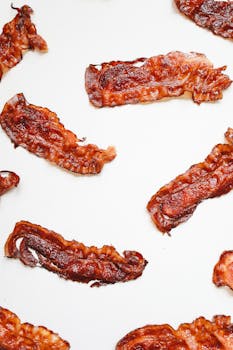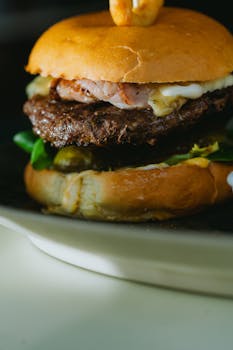Benefits
Muscle Repair
Oxygen Transport
Energy Production
Flavor Enhancement
Versatility in Cooking
Get creative with Beef strips
Transforming beef strips into a tantalizing filling for gourmet tacos, each bite a blend of spices and succulence
Crafting a savory beef stroganoff, the strips elegantly entwined with creamy mushroom sauce over a bed of egg noodles
Marinating beef strips in a zesty Asian-inspired sauce, then stir-frying them with vibrant vegetables for a quick, flavorful weeknight dish
Incorporating the strips into a hearty beef salad, combining fresh greens, cherry tomatoes, and a bold vinaigrette, perfect for a protein-packed lunch
Simmering the strips slowly in a rich, smoky barbecue sauce, then serving them on a crusty roll for a twist on the classic beef sandwich, enhanced with crispy onions and melted cheese
Something you can make with Beef strips
Origin
Beef strips are a type of meat that comes from cattle, which have been domesticated for thousands of years. Cattle were first domesticated in ancient times, with evidence of their domestication dating back to around 6,500 BCE in the Middle East. Over time, the practice of raising cattle and consuming their meat spread to various parts of the world.\n\nToday, beef is produced and consumed globally, with different countries having their own traditions and methods of raising cattle and processing beef. The specific origins of beef strips can vary depending on the region and the specific cut of meat used. Beef strips can be derived from different cuts, such as sirloin, flank, or tenderloin, and can be prepared and cooked in various ways, including grilling, stir-frying, or braising.\n\nIn summary, the origin of beef strips can be traced back to the domestication of cattle in ancient times, with the specific origins of the beef depending on the region and cut of meat used


